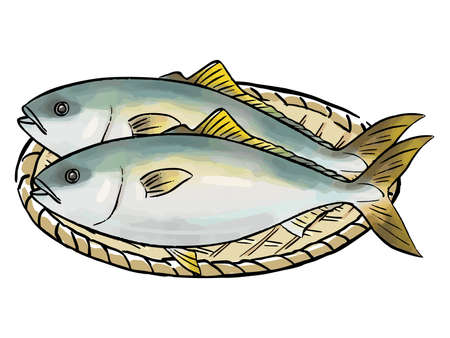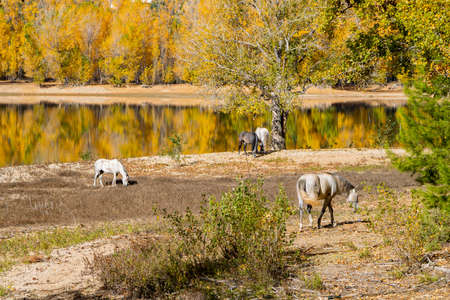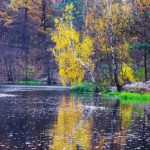1. Understanding Seasonal Water Temperature Changes
As fall rolls in across the United States, water temperatures begin to shift — and for anglers, that means big changes in fish behavior. Understanding how these temperatures change across different regions can help you plan your fishing trips more effectively.
How Water Temperatures Change in the Fall
When summer fades into fall, shorter daylight hours and cooler air temperatures start to lower water temperatures. This cooling doesnt happen at the same rate everywhere — it depends on geography, elevation, and local climate patterns.
Regional Water Temperature Patterns
Heres a quick look at how water temperatures typically shift during fall across different U.S. regions:
| Region | Typical Fall Water Temp Drop (°F) | Main Influencing Factors |
|---|---|---|
| Northeast (e.g., New York, Pennsylvania) | 15–25°F | Rapid air temp drop, early frosts, shorter days |
| Southeast (e.g., Georgia, Florida) | 5–15°F | Milder fall weather, gradual cooling |
| Midwest (e.g., Michigan, Illinois) | 10–20°F | Cold fronts, strong winds, early snow in some areas |
| West Coast (e.g., California, Oregon) | 5–10°F | Ocean currents, coastal fogs, Pacific storms |
| Mountain West (e.g., Colorado, Montana) | 20–30°F | High elevation, sudden cold snaps |
Main Environmental Factors That Affect Water Temperature
- Air Temperature: As daytime highs drop and nights get colder, surface water cools faster.
- Sunlight: With fewer hours of daylight and a lower sun angle, less solar energy warms the water.
- Wind: Wind mixes surface water with cooler deeper layers, speeding up the cooling process.
- Rainfall: Cold autumn rains can reduce surface temps quickly, especially in smaller lakes and rivers.
- Elevation: Higher elevations cool down faster than low-lying areas due to thinner air and earlier frosts.
The Takeaway for Anglers
If you’re fishing in the fall, keep an eye on local weather patterns and know your regions typical temperature trends. When water temps start dropping, fish will respond by changing their location and feeding habits — something we’ll dive into next time.
2. The Science Behind Fish Metabolism and Temperature
As fall sets in and water temperatures begin to drop, fish behavior starts to shift dramatically. These changes are largely tied to a fish’s metabolism, which is directly influenced by the surrounding water temperature. Unlike warm-blooded animals, fish are cold-blooded creatures—meaning their body temperature and metabolic rate change with the environment. Let’s break down how this works and what it means for anglers during the fall fishing season.
How Water Temperature Affects Fish Metabolism
When water temperatures cool down in the fall, a fish’s metabolism slows. This means they burn energy more slowly and don’t need to eat as often as they do in warmer months. However, there’s a sweet spot in early to mid-fall when water temperatures are still cool but not too cold—this is when many species go into feeding mode to bulk up before winter hits.
Metabolism vs. Water Temperature
| Water Temperature (°F) | Fish Metabolism | Feeding Behavior |
|---|---|---|
| 70–60°F | High | Aggressive feeding, high activity |
| 60–50°F | Moderate | Increased feeding before winter slowdown |
| 50–40°F | Low | Sporadic feeding, less movement |
| Below 40°F | Very Low | Minimal feeding, very sluggish |
Changes in Activity Levels
As the water gets cooler, fish become less active overall. In early fall, you might still see bass chasing baitfish near the surface or crappie schooling aggressively. But once the temperature dips below a certain point, these same fish will slow down and move deeper where the temperature is more stable.
Fall Feeding Patterns
The transition into fall triggers a survival instinct in many freshwater species. Fish like largemouth bass, walleye, and trout start feeding more frequently to store fat for the winter months when food becomes scarce. This makes fall one of the best times of year for anglers looking to catch larger, more aggressive fish—especially if you know where to find them based on temperature trends.
Pro Tip:
If you’re fishing during a cooling trend, target areas where the sun warms the water slightly faster—like shallow bays or rocky shorelines. These spots can attract more active fish looking for an easy meal.

3. Species-Specific Fall Behavior Patterns
As water temperatures begin to drop during the fall, different fish species react in their own unique ways. Understanding how popular game fish like bass, walleye, and trout respond to these changes can help anglers adjust their tactics for better success on the water.
Bass (Largemouth and Smallmouth)
Bass become more active as the water cools down from the summer highs. The drop in temperature triggers a feeding frenzy as they prepare for winter. Largemouth bass tend to move into shallower areas where baitfish are schooling, while smallmouth bass often stay deeper but will roam more aggressively in search of food.
Fall Bass Behavior Highlights:
| Water Temp Range (°F) | Behavior | Best Lures |
|---|---|---|
| 70-60°F | Feeding increases, follow baitfish into shallows | Crankbaits, spinnerbaits, topwater plugs |
| 60-50°F | Still aggressive, slower presentations work better | Jigs, soft plastics, jerkbaits |
Walleye
Walleye become more predictable in the fall as they migrate toward rocky points, humps, and river mouths. Cooler temperatures trigger spawning-like behavior that leads them to gather in specific locations. They feed heavily at dawn and dusk, making these prime times for targeting them.
Fall Walleye Behavior Highlights:
| Water Temp Range (°F) | Behavior | Best Lures |
|---|---|---|
| 65-55°F | Migrating to structure-rich areas; active feeders | Jig-and-minnow combos, trolling crankbaits |
| 55-45°F | Bite slows slightly; low-light feeding peaks | Spoons, blade baits, live bait rigs |
Trout (Rainbow and Brown)
Cooler fall waters are ideal for trout. As water temps dip into their comfort zone, trout become more active and can be found cruising along shorelines or just below the surface. Fall is also spawning season for brown trout, which influences their location and behavior.
Fall Trout Behavior Highlights:
| Water Temp Range (°F) | Behavior | Best Lures/Flies |
|---|---|---|
| 60-50°F | Active feeding near surface and banks | Spoons, spinners, dry flies |
| 50-40°F | Browns enter pre-spawn mode; rainbows stay active | Nymphs, streamers, egg patterns |
No matter what species youre targeting this fall, keeping an eye on water temperature and understanding how each fish reacts can dramatically increase your chances of landing a trophy catch.
4. Locating Fish During Fall Transitions
As water temperatures begin to drop in the fall, fish behavior changes dramatically. Understanding where to find them during this transitional period can make or break your fishing trip. Fish tend to move in response to changing water temps, seeking out areas that offer more stable and comfortable conditions. Below are some key spots to target during the fall transition:
Shallow Areas in Early Fall
When fall first arrives and temperatures start to cool, many fish move into shallow waters. These areas warm up quickly during the day and still hold baitfish, making them attractive to predators like bass and pike.
- Best Time: Early morning or late afternoon
- Target Species: Largemouth bass, northern pike, bluegill
- Tips: Look for weed lines, fallen trees, and shallow flats near deeper water
Drop-Offs During Mid-Fall
As the season progresses and surface temperatures continue to fall, fish often migrate to drop-offs—areas where shallow water quickly transitions into deeper zones. These structures offer both access to food and protection from temperature swings.
- Best Time: Midday when sun warms the surface slightly
- Target Species: Smallmouth bass, walleye, crappie
- Tips: Use jigs or soft plastics to work along the slope of the drop-off
Deeper Waters in Late Fall
By late fall, water temps have dropped significantly, and most fish seek out deeper, more thermally stable environments. Deep holes, channels, and submerged structure become prime locations.
- Best Time: Throughout the day as fish remain in deeper zones
- Target Species: Lake trout, perch, catfish
- Tips: Try vertical jigging or using slow-moving baits near bottom structure
Fall Fish Location Cheat Sheet
| Season Stage | Main Location | Species to Target | Bait/Lure Tips |
|---|---|---|---|
| Early Fall | Shallow Flats & Weed Lines | Largemouth Bass, Pike | Topwater lures, spinnerbaits |
| Mid Fall | Slope Drop-Offs & Edges | Smallmouth Bass, Walleye | Craw-style jigs, crankbaits |
| Late Fall | Deep Holes & Channels | Lake Trout, Perch | Spoons, blade baits |
Watch Water Temps Closely
A good thermometer can be one of your most valuable tools in fall fishing. Pay attention to surface temperatures as they can guide you on whether fish are likely holding shallow or moving deep. Even a few degrees difference can change where fish are located.
Pro Tip:
If youre fishing a new lake or river system in the fall, start by scouting transitional zones between shallow and deep water. These are often “highway” areas for migrating fish looking for their ideal comfort zone.
The Bottom Line?
The key to finding fish during fall is understanding how they respond to changing temperatures. Focus on areas that offer temperature stability and access to food sources—youll increase your chances of success every time you hit the water.
5. Adapting Fishing Techniques for Cooler Water
As water temperatures drop in the fall, fish behavior changes significantly. They become more sluggish and conserve energy, which means your summer fishing tactics might not work as well. To stay successful on the water, its important to adjust your techniques to match the cooler conditions.
Effective Lures for Fall Fishing
In cooler water, fish tend to go after easy meals. This makes certain lures much more effective than others. Heres a quick guide to some of the best lures to use during the fall:
| Lure Type | Best Use | Target Species |
|---|---|---|
| Jigs | Great for slow presentations near structure or bottom | Bass, Walleye |
| Spoon Lures | Mimic dying baitfish, ideal for vertical jigging | Pike, Trout, Bass |
| Crankbaits (shallow to mid-depth) | Use slow retrieve to imitate sluggish prey | Bass, Walleye |
| Soft Plastics (creature baits, worms) | Work well with finesse techniques like drop shot or Texas rig | Bass, Crappie |
| Spinnerbaits with Colorado blades | Create strong vibrations for murky water or low light conditions | Bass, Pike |
Adjusting Retrieval Speeds
One of the biggest mistakes anglers make in fall is retrieving too fast. Fish are conserving energy and won’t chase down fast-moving lures. Slow and steady wins the race this time of year.
Recommended Retrieval Techniques:
- Slow Roll: Keep spinnerbaits and crankbaits moving just fast enough to keep them off the bottom.
- Lift and Drop: Let jigs sink to the bottom, then lift them slightly and let them fall again—this mimics injured baitfish.
- Twitch-Pause: For soft plastics or jerkbaits, give a few twitches followed by a long pause. The pause often triggers strikes.
- Crawl Along Bottom: Drag Texas-rigged soft plastics slowly along the lake or riverbed.
Presentation Tips for Fall Success
The way you present your lure can make all the difference in cooler waters. Fish are less aggressive, so subtlety and realism matter more.
Key Presentation Strategies:
- Use Natural Colors: As water clarity improves in fall, natural colors like green pumpkin, shad, or crawfish patterns perform better.
- Downsize Your Tackle: Smaller lures often get more bites when fish are picky.
- Add Scent or Attractant: In cold water, scent can convince hesitant fish to commit.
- Fish During Peak Times: Focus on late morning through early afternoon when water temps are at their highest for the day.
- Target Transition Zones: Look for areas where shallow flats drop into deeper water—fish often hold here in fall.
Tweaking your approach based on water temperature can lead to more consistent success during fall fishing trips. By understanding how colder temps affect fish behavior—and adjusting your lures, retrieve speed, and presentation—you’ll stay ahead of the game all season long.
6. Safety and Gear Considerations for Fall Fishing
As water temperatures begin to drop in the fall, fish behavior changes—but so do the conditions for anglers. Staying safe and comfortable while fishing in cooler weather means making a few smart adjustments to your gear and being aware of seasonal risks.
Dress for the Conditions
Fall mornings can be chilly, and even if the sun comes out later, you’ll want to stay warm and dry. Layering is key. Start with moisture-wicking base layers, add insulating mid-layers, and finish with a waterproof outer shell. Avoid cotton—it holds moisture and can lead to hypothermia in cold conditions.
Recommended Clothing Layers
| Layer | Purpose | Example Material |
|---|---|---|
| Base Layer | Wicks moisture from skin | Polyester or Merino Wool |
| Mid Layer | Insulates body heat | Fleece or Down |
| Outer Layer | Protects from wind and rain | Waterproof Shell (Gore-Tex) |
Stay Dry and Safe on the Water
Cold water temperatures significantly increase the risk of hypothermia if you accidentally fall in. Always wear a properly fitted life jacket—especially when fishing from a boat or wading in rivers. Non-slip footwear is also essential to prevent falls on wet rocks or boat decks.
Adjust Your Gear for Cooler Temps
Certain gear adjustments can make your fall fishing trips more effective and enjoyable:
- Rod & Reel: Use slightly stiffer rods for better sensitivity as fish bites can be subtle in colder water.
- Bait Choices: Coldwater fish often respond better to slower-moving lures; consider soft plastics or jigs with subtle action.
- Tackle Storage: Keep your tackle organized and dry—fall humidity and rain can cause rust quickly.
Emergency Preparedness Tips
No one plans to have an accident, but being prepared makes all the difference:
- Cary a Dry Bag: Store a change of clothes, first-aid kit, flashlight, and emergency blanket.
- Let Someone Know: Always tell a friend or family member where you’re going and when you expect to return.
- Use a Weather App: Check updated forecasts before heading out—autumn storms can roll in fast.
Remember:
Your safety is just as important as catching fish. With cooler water temperatures affecting both fish activity and angler comfort, preparing properly lets you enjoy everything fall fishing has to offer without unnecessary risks.


